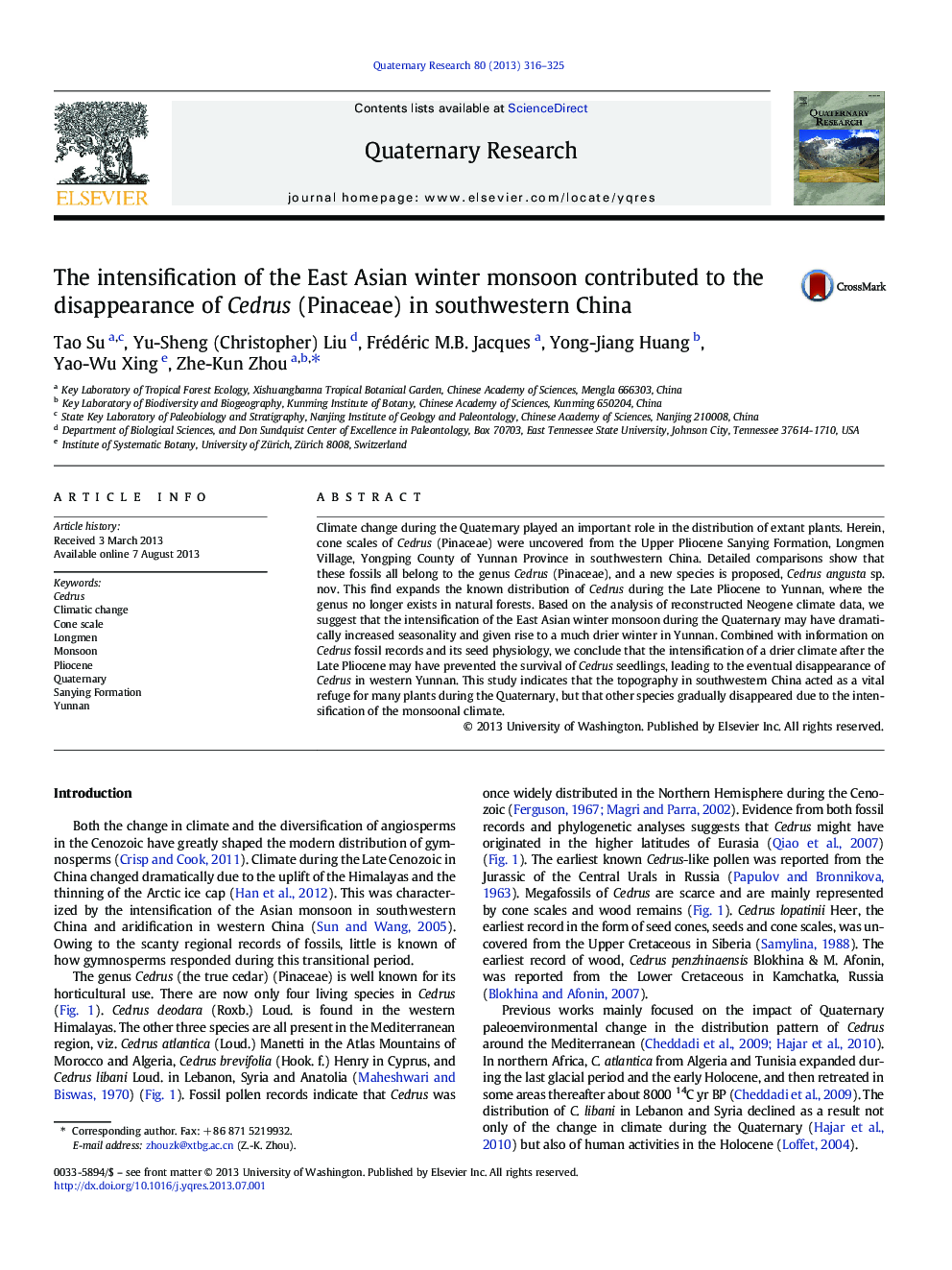| کد مقاله | کد نشریه | سال انتشار | مقاله انگلیسی | نسخه تمام متن |
|---|---|---|---|---|
| 1045373 | 944812 | 2013 | 10 صفحه PDF | دانلود رایگان |

Climate change during the Quaternary played an important role in the distribution of extant plants. Herein, cone scales of Cedrus (Pinaceae) were uncovered from the Upper Pliocene Sanying Formation, Longmen Village, Yongping County of Yunnan Province in southwestern China. Detailed comparisons show that these fossils all belong to the genus Cedrus (Pinaceae), and a new species is proposed, Cedrus angusta sp. nov. This find expands the known distribution of Cedrus during the Late Pliocene to Yunnan, where the genus no longer exists in natural forests. Based on the analysis of reconstructed Neogene climate data, we suggest that the intensification of the East Asian winter monsoon during the Quaternary may have dramatically increased seasonality and given rise to a much drier winter in Yunnan. Combined with information on Cedrus fossil records and its seed physiology, we conclude that the intensification of a drier climate after the Late Pliocene may have prevented the survival of Cedrus seedlings, leading to the eventual disappearance of Cedrus in western Yunnan. This study indicates that the topography in southwestern China acted as a vital refuge for many plants during the Quaternary, but that other species gradually disappeared due to the intensification of the monsoonal climate.
Journal: Quaternary Research - Volume 80, Issue 2, September 2013, Pages 316–325